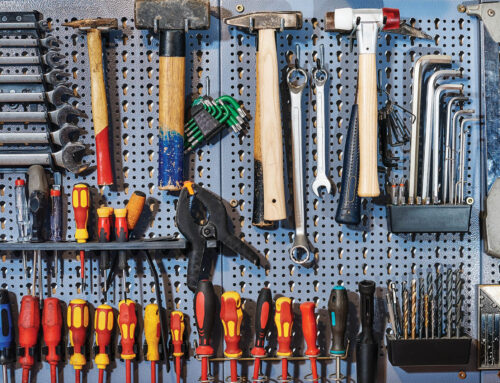Bimini backstay cutouts fabrication

This Jeanneau 409 is moored in historic Salem Harbor in Massachusetts. The bimini features dual backstay cutouts to extend sun coverage aft over the helms.
At Hood Canvas, we fabricate sailing biminis on a regular basis. By extending the bimini aft of the standing rigging, our customers get better sun and weather coverage at the helm. This means the backstay or backstays pass between bimini frame components. Folding the bimini is restricted to folding upward against the backstay. We recommend that our customers remove the bimini when they do this to prevent chafing.
In this article, we have included photos of both a single backstay bimini and a larger dual backstay bimini. The zippered cutouts can go two ways—aft through the pocket visor assembly or out to the sides. We prefer to go aft through the pocket visor assembly, as the stress on the zipper is considerably less and the length is generally shorter. This article will focus on the aft method.
 Photos 1–4: This series of photos shows how we pattern and locate exactly where the backstay and backstays intersect the bimini. Our customer’s sailboat must have the mast up to properly locate the cutouts on our pattern. We make hash marks in the area we are going to cut before we do so. After we have cut up to the backstay, we bring our Tyvek® around it and use the hash marks to assist in taping the pattern back together on the other side. We go on patterning as usual, as the backstay is now passing through our pattern. The cut up to the backstay on the pattern can come from the easiest side, not necessarily from the side the zipper will be on.
Photos 1–4: This series of photos shows how we pattern and locate exactly where the backstay and backstays intersect the bimini. Our customer’s sailboat must have the mast up to properly locate the cutouts on our pattern. We make hash marks in the area we are going to cut before we do so. After we have cut up to the backstay, we bring our Tyvek® around it and use the hash marks to assist in taping the pattern back together on the other side. We go on patterning as usual, as the backstay is now passing through our pattern. The cut up to the backstay on the pattern can come from the easiest side, not necessarily from the side the zipper will be on.
 Photos 5–8: These photos are of a large single backstay cutout we did for Ruby, which has the radar support going up the backstay, requiring a larger-than-normal cutout hole. The wrap, or what we like to refer to as “the turret,” extends around the backstay and includes the zipper up one side. This turret is closed tight around the backstay at the top with webbing and a buckle. The turret can be straight or tapered. We usually do a straight 6-inch-tall turret. Cone-generating programs can be found online if you prefer a tapered turret.
Photos 5–8: These photos are of a large single backstay cutout we did for Ruby, which has the radar support going up the backstay, requiring a larger-than-normal cutout hole. The wrap, or what we like to refer to as “the turret,” extends around the backstay and includes the zipper up one side. This turret is closed tight around the backstay at the top with webbing and a buckle. The turret can be straight or tapered. We usually do a straight 6-inch-tall turret. Cone-generating programs can be found online if you prefer a tapered turret.
Photos 9–12: Late July features dual backstay cutouts zipping aft through the pocket visor assembly in two places. If we were to add an enclosure, we would have to break the enclosure zippers at these two places on our visor.
Mark Hood, MFC, and his wife, Deb, own and operate Hood Marine Canvas Training in Merrimac, Mass. www.hoodcanvas.com,
www.facebook.com/marinecanvastraining.
 TEXTILES.ORG
TEXTILES.ORG 






